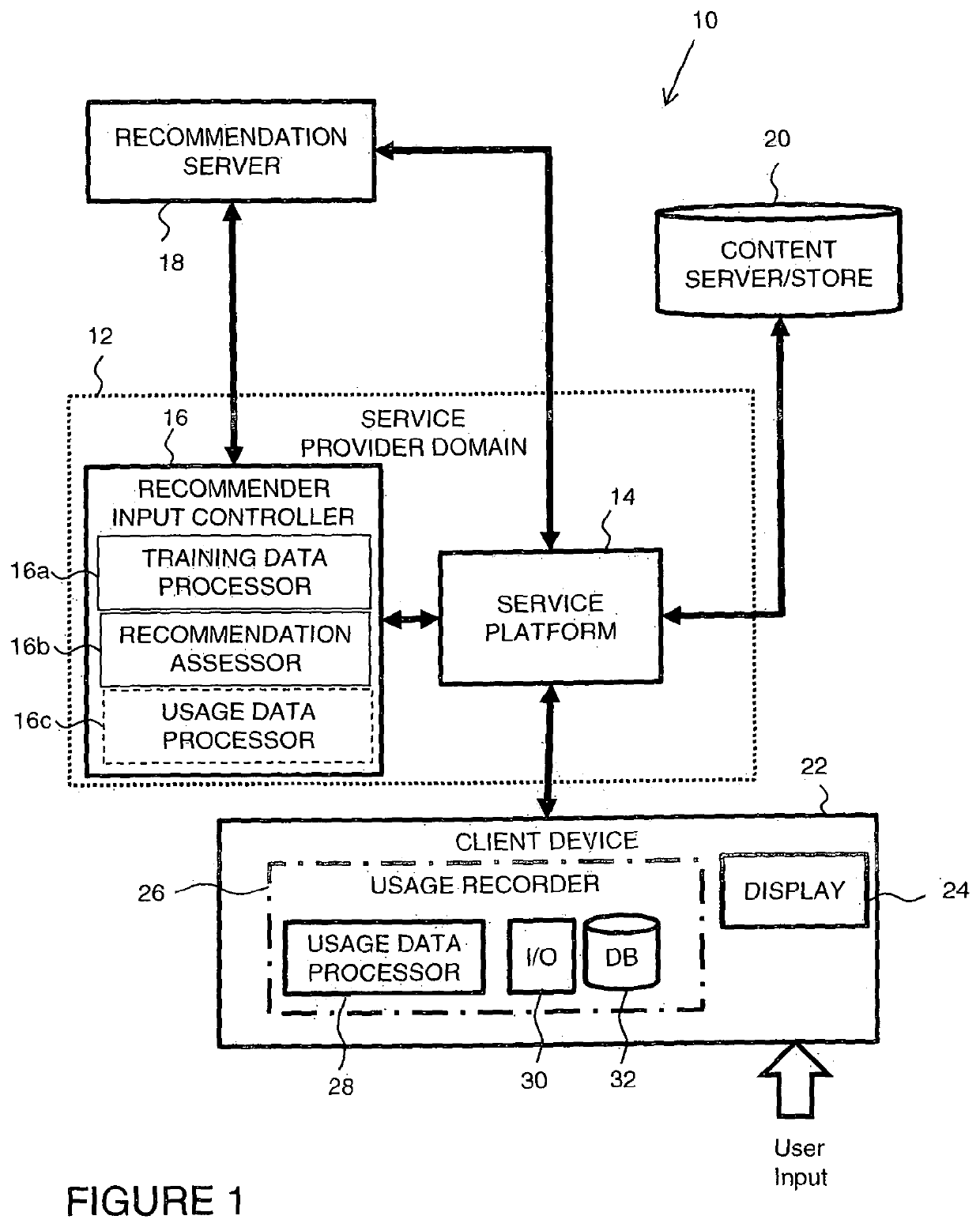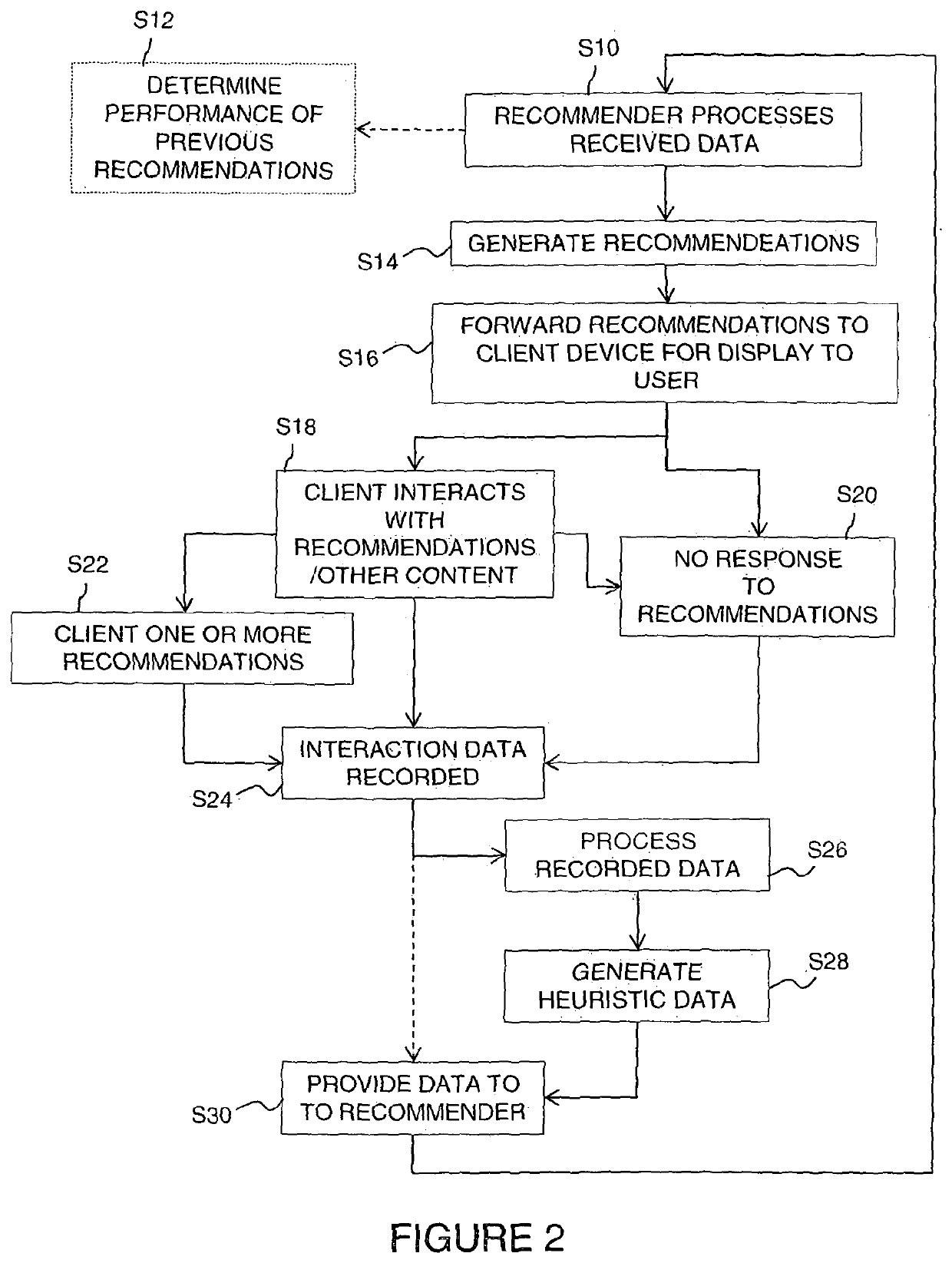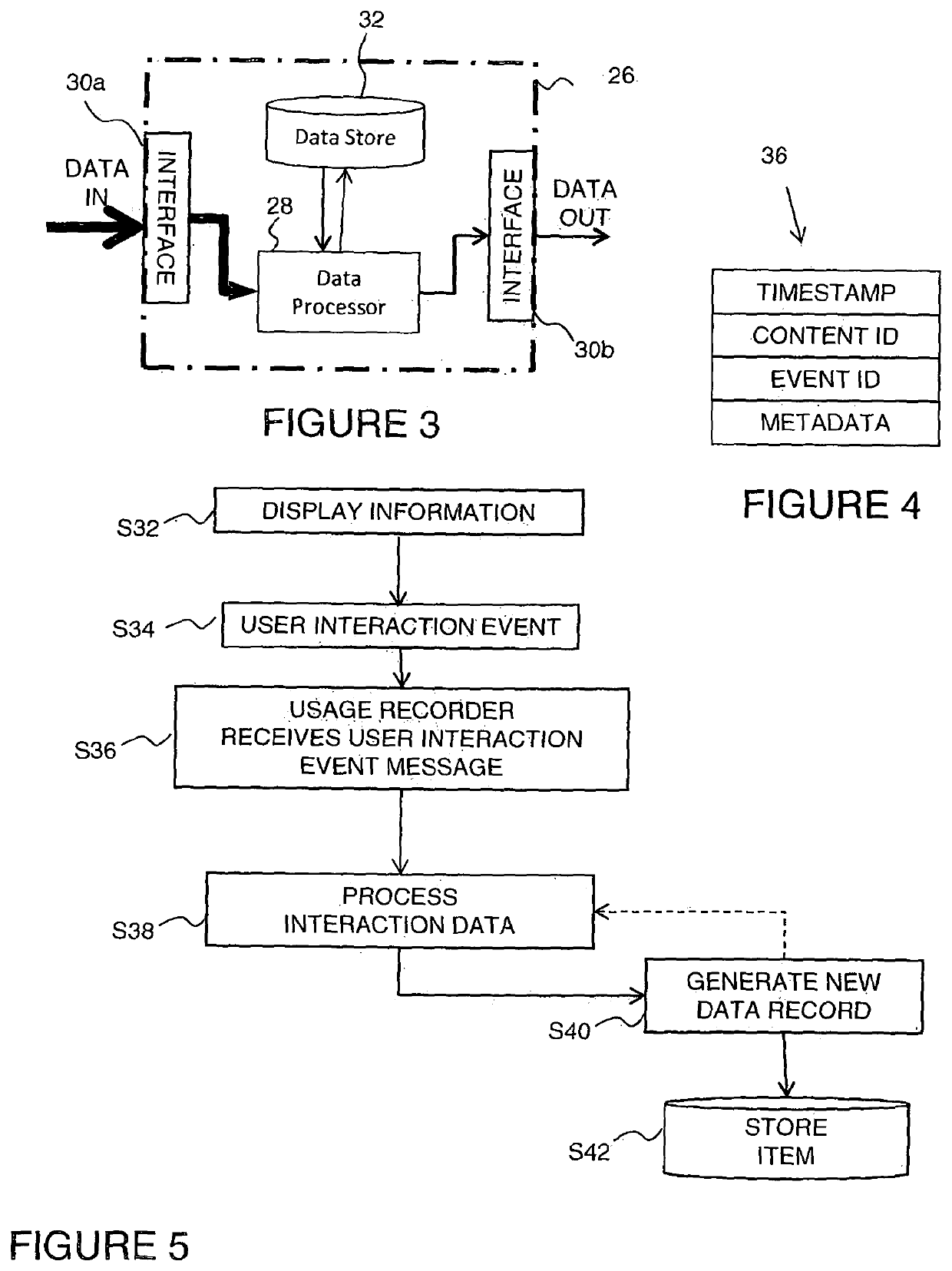Recommender control system, apparatus, method and related aspects
a technology of recommender control and control system, applied in the field of recommender control system, apparatus, method, can solve the problems of worsening the quality of the recommendations provided by the system, useless data already removed from the system, etc., and achieves the effect of increasing the usefulness of recommendations, high level of confidence in users, and effective and efficient operation
- Summary
- Abstract
- Description
- Claims
- Application Information
AI Technical Summary
Benefits of technology
Problems solved by technology
Method used
Image
Examples
Embodiment Construction
[0031]FIG. 1 of the accompanying drawings shows a recommender input control system 16 according to an embodiment of the invention implemented in a data communications system 10 comprising a number of interconnected components. Communications system 10 in this embodiment is arranged 10 enable a service provider to provide a content delivery service to a plurality of client devices 22 operated by end users (only one such client device being shown for simplicity).
[0032]Although only one client device is shown in FIG. 1, typically a large number and range of different types of client devices 22 are supported by a service platform 14 such as that shown. For example, any device which is capable of providing recommendation information to a display or which has an integral display, such as devices configured to provide electronic program guides (EPGs), for example, set top boxes, internet capable televisions, mobile communications devices, personal computers etc. As shown in FIG. 1, the cli...
PUM
 Login to View More
Login to View More Abstract
Description
Claims
Application Information
 Login to View More
Login to View More - R&D
- Intellectual Property
- Life Sciences
- Materials
- Tech Scout
- Unparalleled Data Quality
- Higher Quality Content
- 60% Fewer Hallucinations
Browse by: Latest US Patents, China's latest patents, Technical Efficacy Thesaurus, Application Domain, Technology Topic, Popular Technical Reports.
© 2025 PatSnap. All rights reserved.Legal|Privacy policy|Modern Slavery Act Transparency Statement|Sitemap|About US| Contact US: help@patsnap.com



